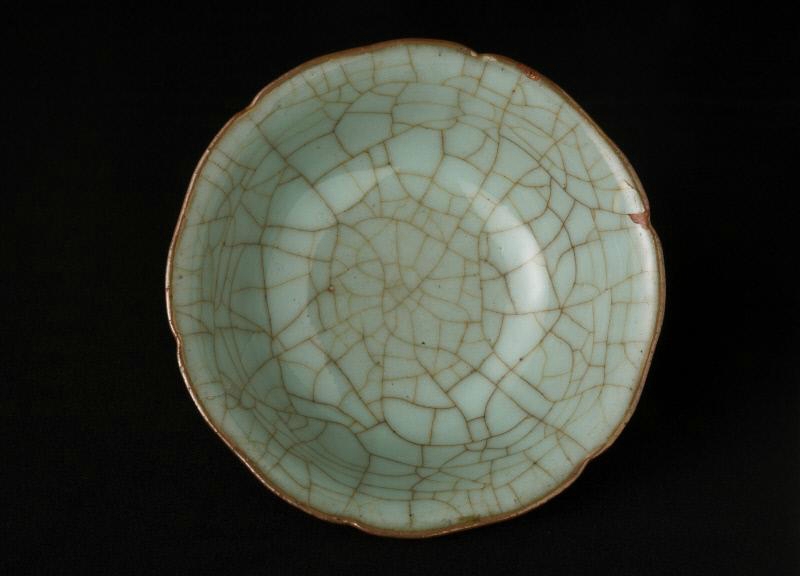Bowl with greenish glaze after the Song-imperial style, Ming dynasty (1368-1644), Reign of the Chenghua emperor (1465-1487






Bowl with greenish glaze after the Song-imperial style, Ming dynasty (1368-1644), Reign of the Chenghua emperor (1465-1487), China, Jingdezhen, Jiangxi province, Porcelain with greenish glaze featuring brown crackles, H. 2 in x Diam. 4 7/8 in, H. 5.1 cm x Diam. 12.4 cm, The Avery Brundage Collection, B60P1477 © 2016 Asian Art Museum Chong-Moon Lee Center for Asian Art and Culture
Due to the extreme difficulty in technique and the high cost of agate-containing materials in the Song Ru glaze, Ming official kilns did not make a large quantity of Ru-type wares (see cat. no. 76). Most were modeled after official celadon wares of the Southern Song dynasty (1127–1279), from the kilns in the then capital Lin'an (present-day Hangzhou, Zhejiang), where the ceramic programs and technical foundations were built upon the Ru kiln system. A new prosperity that ensured a peaceful realm, coupled with a well-developed taste for ceremonial products, resulted in a greater fashion for jadelike glazes during the Southern Song. The glazes were more varied in tones than ever before. Greenish or bluish glazes became thinner around the mouth rim as they flowed downward during firing, revealing a darker color. The edges of the foot ring, where the glaze had been wiped off before firing, turned a gray color afterward, imparted by the heavy iron oxide content of the regional clay. These two features, known as the "purple-colored mouth and iron-colored foot," were continuously reproduced for the next four hundred years.
This six-foliated bowl shares similarities with official Southern Song celadon ware, especially in its grayish green glaze and crackle patterns. However, its glaze is obviously more vitreous than that of the official Song celadon, and its brown-colored mouth and iron-colored foot are the result of an artificially colored slip deliberately applied around the rim and foot, rather than a more expensive traditional glaze. The absence of high-iron-content clay in Jingdezhen prevented Ming porcelain producers from engaging in greater experimentation with form and glazes.

/https%3A%2F%2Fprofilepics.canalblog.com%2Fprofilepics%2F1%2F0%2F100183.jpg)
/https%3A%2F%2Fstorage.canalblog.com%2F03%2F02%2F119589%2F96711876_o.jpg)
/https%3A%2F%2Fstorage.canalblog.com%2F11%2F31%2F119589%2F94773502_o.jpg)
/https%3A%2F%2Fstorage.canalblog.com%2F20%2F83%2F119589%2F94772815_o.jpg)
/https%3A%2F%2Fstorage.canalblog.com%2F26%2F72%2F119589%2F75604929_o.jpg)
/https%3A%2F%2Fstorage.canalblog.com%2F59%2F60%2F119589%2F26458628_o.jpg)


/http%3A%2F%2Fstorage.canalblog.com%2F57%2F78%2F119589%2F129759940_o.jpg)
/http%3A%2F%2Fstorage.canalblog.com%2F76%2F00%2F119589%2F129065442_o.jpg)
/http%3A%2F%2Fstorage.canalblog.com%2F99%2F10%2F119589%2F129064621_o.jpg)
/http%3A%2F%2Fstorage.canalblog.com%2F18%2F84%2F119589%2F129061143_o.jpg)